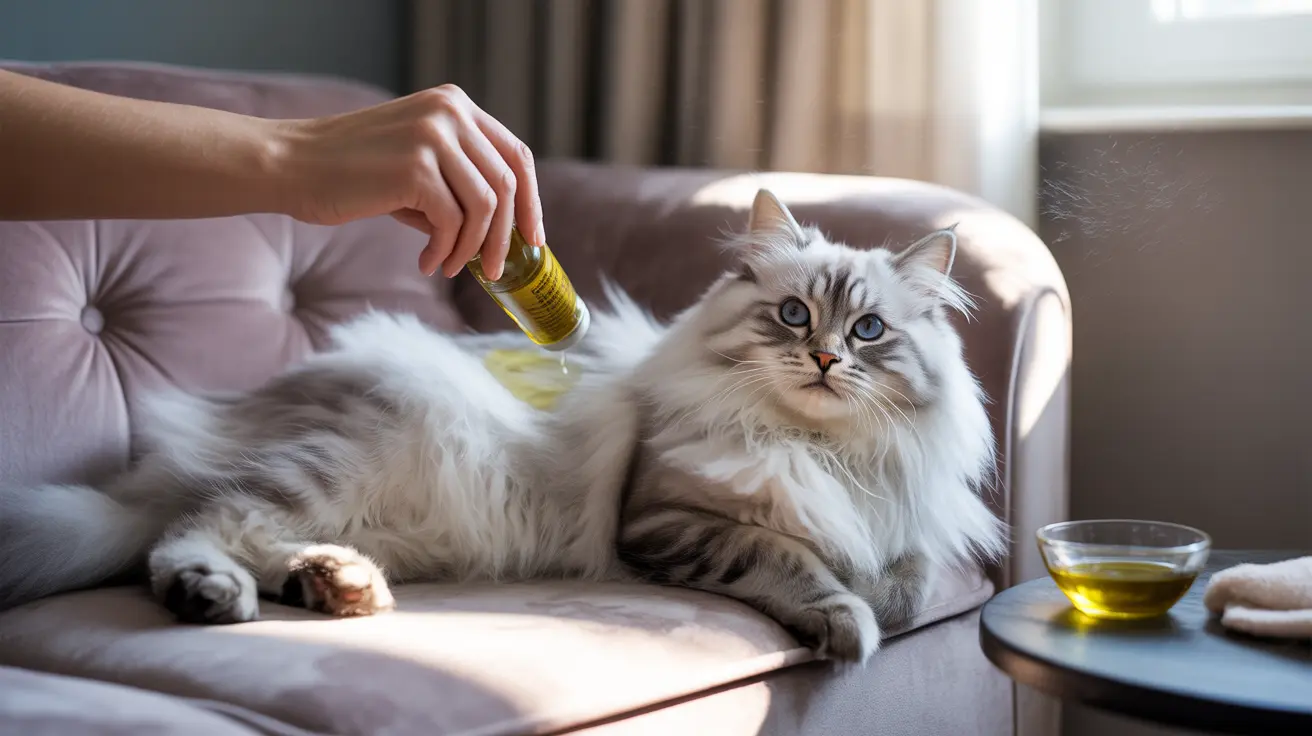Discovering your cat has gotten into a sticky situation with fly trap glue can be distressing. Fortunately, with the right approach and household materials, you can safely remove the adhesive without harming your feline friend. This comprehensive guide will walk you through the most effective and gentle methods to free your cat from fly trap adhesive while keeping their fur and skin intact.
Understanding Fly Trap Adhesives and Cat Safety
Fly trap glue is designed to be extremely sticky but generally non-toxic. However, improper removal attempts can harm your cat's skin or damage their fur. Before beginning the removal process, it's essential to stay calm and assess the situation carefully to determine the best course of action.
Safe and Effective Removal Methods
Using Household Oils
The most effective and safest method for removing fly trap glue from cat fur is using common household oils. Here's how to proceed:
- Vegetable oil
- Olive oil
- Mineral oil
- Baby oil
Apply the oil generously to the affected area, gently massaging it into the fur where the glue is stuck. Allow the oil to penetrate for several minutes to help break down the adhesive bonds.
Step-by-Step Removal Process
- Gather your supplies (oil, soft cloth, fine-toothed comb)
- Apply oil generously to the affected area
- Wait 5-10 minutes for the oil to work
- Gently work the glue loose with your fingers
- Use a fine-toothed comb to remove remaining residue
Professional Care and When to Seek Help
While many fly trap glue situations can be handled at home, certain circumstances require professional veterinary attention:
- Glue near sensitive areas (eyes, mouth, nose)
- Large amounts of adhesive
- Signs of skin irritation or injury
- Extremely matted or tangled fur
Aftercare and Cleaning
Once the glue is removed, it's important to properly clean your cat's fur:
- Wash the area with cat-safe shampoo
- Rinse thoroughly to remove all oil residue
- Dry the fur completely
- Monitor the skin for irritation
Prevention Tips
To avoid future incidents with fly traps:
- Place traps in areas cats cannot access
- Consider alternative pest control methods
- Use enclosed trap designs
- Regular inspect and maintain pest control devices
Frequently Asked Questions
How can I safely remove fly trap glue from my cat's fur without hurting their skin?
Apply vegetable oil or mineral oil to the affected area, let it sit for several minutes, then gently work the glue loose with your fingers. Never pull or tug at the fur.
What household oils are best for dissolving fly trap glue stuck on a cat?
Vegetable oil, olive oil, mineral oil, and baby oil are all effective and safe options. Avoid using any chemical solvents or cooking sprays.
Is it safe to use chemicals or solvents to get fly trap glue out of my cat's hair?
No, never use chemicals or solvents as these can be toxic to cats and may cause severe skin irritation or burns. Stick to natural oils for safe removal.
When should I seek veterinary help if my cat gets fly trap glue on sensitive areas?
Seek immediate veterinary assistance if the glue is near the eyes, mouth, or genitals, or if there's a large amount of adhesive that you cannot safely remove at home.
How can I prevent my cat from getting stuck on sticky fly traps in the first place?
Place fly traps in areas your cat cannot access, consider using enclosed traps, and explore alternative pest control methods that are pet-safe.
Remember, patience is key when removing fly trap glue from your cat's fur. Never rush the process or use force, as this could cause pain or injury to your pet. With gentle handling and the right materials, you can safely free your cat from this sticky situation.






